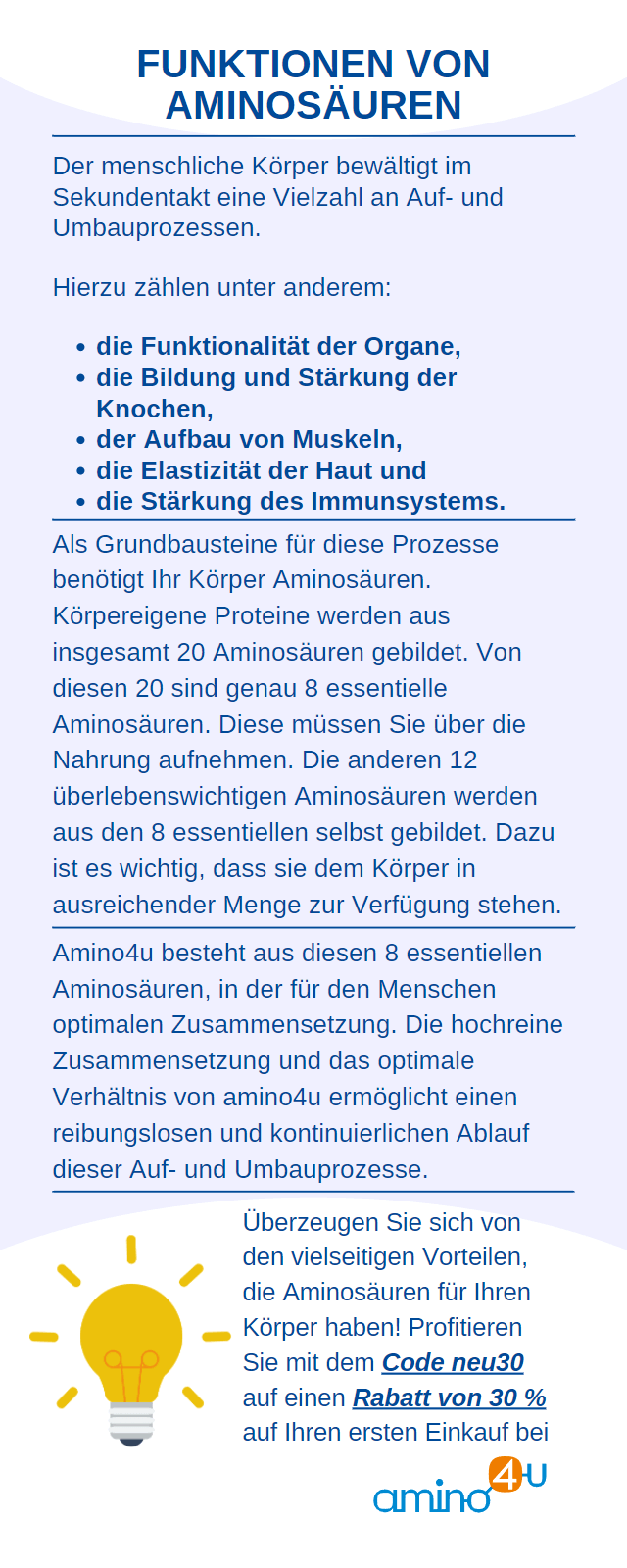Many endurance runners in particular find strength training - in contrast to sprinters - unattractive. It is viewed more as a chore than an important part of building one's performance. The importance of intramuscular coordination for running is underestimated. As a runner, it is worth showing a little more interest and passion in this topic. Regular strength training for runners supports stability, especially in the torso and leg areas. By strengthening these areas you can prevent injuries.

Why is strength training important for runners?
Anyone who is enthusiastic about running will be happy about the typical advantages. Medium and longer distance runs in particular train different physiological areas of our body. The cardiovascular system benefits here, as does breathing, metabolism, the immune system and the mental state. Fat burning can be stimulated at a certain intensity.
Muscles can be stabilized and bones can be strengthened. Runners are usually aware of these advantages of their sport. This is precisely why some runners believe that they can do without additional muscle building training. Ultimately, the running movement itself provides the appropriate stimuli from which the muscles and bones can nourish themselves. This assumption is not the whole truth.
The secret of speed
Sprinters quickly understand why they need well-developed muscles for their short running distances . The white muscle fibers represent a high level of strength development with relatively low endurance. They are the ones that primarily enable sprint performance over short distances. Sprint and strength go hand in hand. The endurance runner has more type 1 muscle fibers. These red muscle fibers develop little strength, but are very durable.
Anyone who observes a sprinter will notice that they also have a well-defined and muscular upper body. If you want to be successful over short distances, train your strength consciously and holistically. Strength training is therefore part of regular training for sprinters. If you want to successfully master sprints and continuously increase your performance , you don't just train your explosive speed.
The most important thing is to train your muscles through regular training. Isometric training is also essential in combined sports where endurance and strength play a role. Strength training in triathlon, cycling and swimming is a given. Endurance athletes, on the other hand, sometimes neglect their muscle training. It's not a good decision if we look at the muscles involved in endurance running.
Which muscles are used when running?
The running movement predominantly uses the lower part of the body. This stress can be very intense under certain circumstances. Since running is a monotonous movement and endurance runners cover long distances, the muscles in the upper body often go unnoticed. The result can be muscular imbalances.
We are also familiar with this phenomenon, for example, from poor posture such as sitting on one side. This uneven distribution and development of muscles can hinder us when running and generally harm our health. Why this is so can easily be explained by the interaction of the passive and active musculoskeletal system.
The active and passive musculoskeletal system
In addition to the tendons and fascia, our muscles are part of the active musculoskeletal system. These areas are called active because they are mobile. This is how they differ from the passive musculoskeletal system. It is made up of tendons, ligaments, bones, joints and intervertebral discs. These areas support the body. Movement is only possible through muscle strength .
The passive musculoskeletal system is moved by the interaction with the active musculoskeletal system. From these requirements it follows that only well-coordinated and trained muscle groups are able to set the supporting parts of the anatomy in motion. After all, our body has to absorb 3-4 times our body weight per step .
Endurance runners also have a good argument for regularly doing strength training tailored to their needs. The running style benefits from muscle training, as does the fatigue resistance of the entire muscles. Muscles make longer endurance performance possible. The runs and movements become rounder and more harmonious. This also regularly influences the speed.
The focus of the running movement is primarily on the center of the body. The abdominal and back muscles are important so that the torso and pelvis can participate in the running movement as stabilizing support elements. It creates the best conditions for an effective running style. Good running style can prevent injuries and optimize running performance.
Through muscle training you also strengthen the surrounding areas such as tendons and connective tissue. If you also stretch regularly, you will optimally prepare the relevant areas of your body for running.

How do you create balance with muscle training?
Without additional training sessions, running predominantly...
- Calf muscles
- thigh muscles
- Foot muscles
- Abs and glutes
- partly arm muscles
- Neck and back muscles
claimed. However, the demands vary in intensity, so running alone trains the leg and foot muscles . The aim here is to create balance in the other muscle groups with additional training. Which muscles need your attention here?
Above all, think about the ...
- Muscles in the middle of the body (core muscles).
- Back muscles.
- Hip and glute muscles.
Nutrition plays an important role
Maybe you have already developed a certain ambition. Here you consider yourself an ambitious amateur athlete. In this context, you have probably already dealt with the topic of nutrition. Especially in the endurance area, for example in marathons, you follow very specific nutritional guidelines in connection with competitions and training.
However, we would like to point out one thing to you. Your muscles need protein as a building material for their growth. That's why it's so important to ensure an adequate supply of protein and the smallest protein building blocks, the amino acids . You probably know this, but the need for protein can increase during intense physical activity. Here you may no longer be able to get by with the average recommended 8 g of protein per kilogram of body weight .
Keep your protein intake in mind, especially if you follow a vegan or vegetarian diet. Even if you reduce calories to lose weight, you should ensure your protein supply. If a reduced calorie intake means that the organism does not receive enough protein, it can attack the body's own protein from the muscles .
This reduces the basal metabolic rate and ultimately leads to an increase in weight when calorie intake returns to normal. Adequate intake of amino acids and protein is also an important issue in strength training among runners .

Choosing the right strength training for runners
Strength training for runners is not a monotonous affair. Many variations can be tried out here, for example strength training without equipment and on equipment . Isometric exercises can be just as effective and exciting, in which intramuscular tension alone ensures the training effect.
Isokinetic training has established itself as more than just strength training for swimmers . You train with an adjusted level of effort. This is very close to the flow resistance when swimming. If you train for your runs, you can also exclude strength units from the typical strength training in cycling . What should you generally pay attention to when training muscles in the running area?
Endurance runners in particular often have mixed feelings about this topic because they fear developing large, heavy muscles. However, muscle training does not result in intensive muscle growth.
Active running people do not train for intensive muscle development, but...
- functional and running specific.
- on strength endurance and
- for inter- and intramuscular coordination.
This means that all elements in the muscle itself are trained in order to make the muscle's function optimally usable for running. At the same time, the cooperation of different muscles is consciously developed through appropriate strength training. In some cases, individual priorities are set for the training. For example, strength training in a triathlon is different from that of a marathon runner.

Amount of training units
Before we get into exercise examples for runners' strength training, let's look at how much strength training is best for runners. Especially for beginners, an overload situation can quickly arise in the legs or core muscles if muscles are not built up in other areas to compensate.
Therefore, the question of the optimal frequency for strength training cannot be answered in a standard way for every running athlete. The general recommendation is about 1 - 2 strength training sessions per week . A little more training may be necessary at the beginning to create the basis for stable muscles throughout the body.
Ambitious runners train for strength 2-3 times a week . Standard recommendations for the length of the individual training sequence are also rather out of the question. Beginners may find good results with 20-30 minutes, while advanced runners may prefer 40-50 minutes of strength sessions per session.
Isometric exercises are particularly suitable for stabilizing certain muscle groups. Training isometrically means that you are not working against resistance. Rather, it is about holding a certain position over a longer period of time. The muscle stimulus is not achieved by a pulling or pushing movement, but by using the intramuscular opinion.
You can do this strength training without equipment almost anywhere. A visit to the gym is not necessary. You don't need weights like dumbbells for this workout. As a runner, you can benefit from isometric exercise sessions .
Always train individually with your existing strength reserves
A distinction must be made between isometric units and isokinetic training. This type of training is also well suited for active runners . It is possible to achieve maximum muscle fatigue at any time during training. This is possible because the load continuously adapts to existing strength reserves during training.
The intensity varies, ensuring resistance and a consistent speed during training. Isokinetic training can be done primarily on special training equipment that automatically adapts to the trainee. This isokinetic training method is also interesting if you want to get back into running and strength training after a break due to injury.
As with any type of training, it is advisable to increase the demands gradually. The point here is not to get from 0 to 100, but rather to keep an eye on your own physical development. What matters most is regularity. Muscle definition and strength endurance are designed to be a long-term process. Regularity is so important because muscles break down very quickly if they are not used.
A nice side effect of strength training
If you run regularly, ideally you won't have any weight problems. Beginners often start running to improve their figure and also do something for the cardiovascular system. Basically a good starting point. If you take everything slowly, you don't overload yourself or your physical structures.
If units for stabilizing and developing strength endurance are integrated, body weight also benefits. The muscles burn a lot of energy. Our basal metabolic rate increases with muscle growth . As a runner, you don't want to build up a lot of muscle, but even a moderate increase in muscle mass has an impact on the way you burn energy at rest.
There are other individual factors that come into play here that we cannot go into. Basically, you can assume that working on your muscles can have a positive effect on your body weight. We have not yet taken into account the tightening and better definition of individual body parts via more muscles .
4 strength exercises for runners
We have already seen that the middle of the body needs to be stabilized with the torso of runners. We present our 4 favorites to you.
- Lunges: lunges:
Lunges or lunges are effective for training leg muscles. With this simple exercise you also train the inner muscles of the upper and lower leg areas.

- Squats with a barbell
Anyone who runs and cycles, for example in triathlons, will be happy about these effective combination exercises for strength training for cycling and running.

- Twister - abdominal muscle training with kettlebells
This exercise is extremely helpful in strengthening the abdominal and back muscles. Keep your back straight while doing this exercise. Sit upright on an exercise mat and move your weight evenly from left to right and upside down. Use both arms and keep your abdominal muscles tense. The correct execution can be found here .

- climb stairs
Climbing stairs is ideal for runners . Stand on a staircase. Climb a few steps quickly. Take a short break and rock the balls of your feet up and down 10 times. With this exercise you will strengthen your calf muscles and train balance and tension at the same time. You also train the Achilles tendon, the classic weak point of active runners.

Strength training for runners is worthwhile
Given the many options, are you now really interested in integrating strength training into your weekly training plan? Our article makes it clear that strength training is mandatory for runners . Runners never have to get bored with the strength units.
Strength training without equipment, training in the studio, isometric exercises and isokinetic training can alternate. Even simple aids such as Therabands support runners in strength training . Combinations such as strength training in triathlon open up further possibilities for strength training sessions tailored to your needs. If strength training ends up being fun, don't be surprised.




